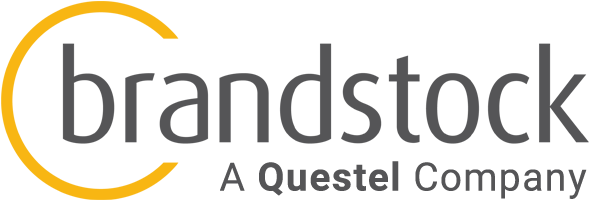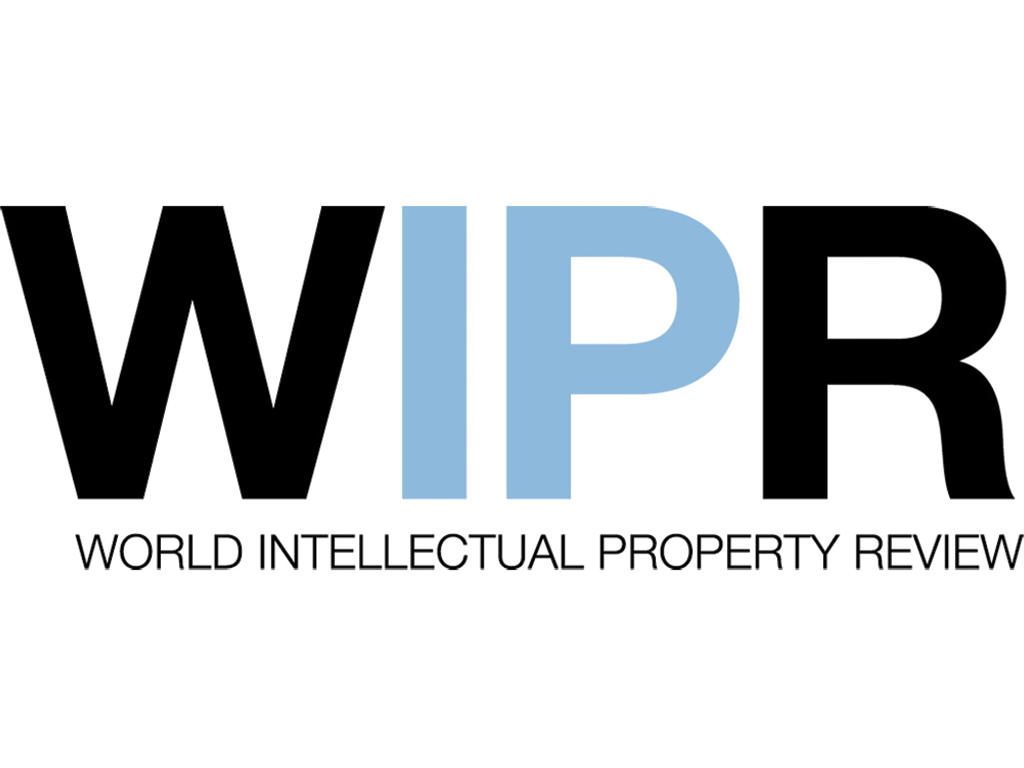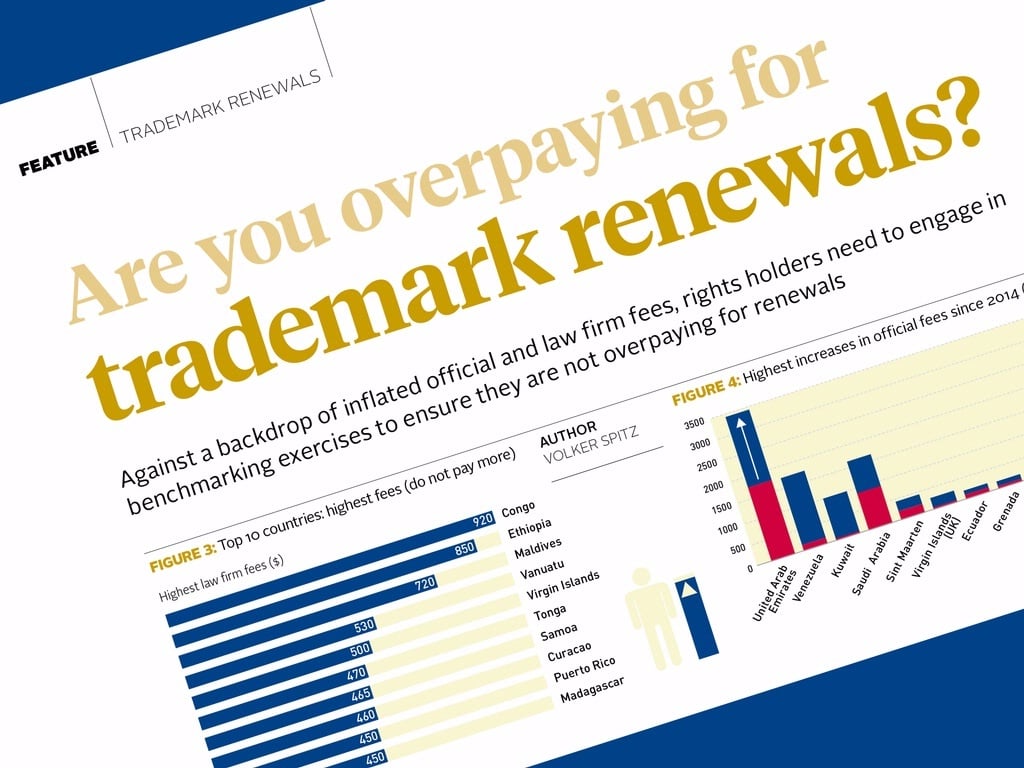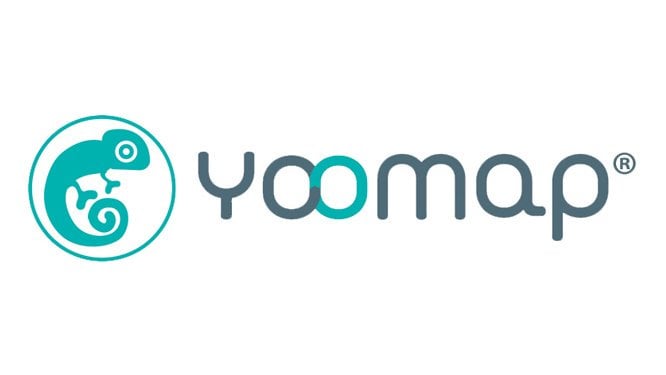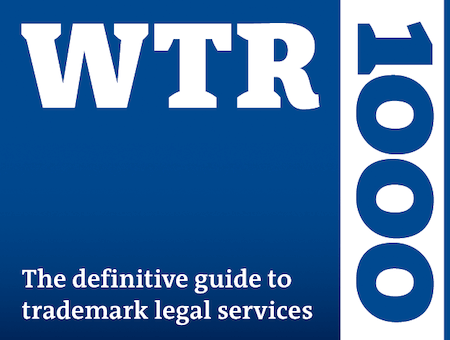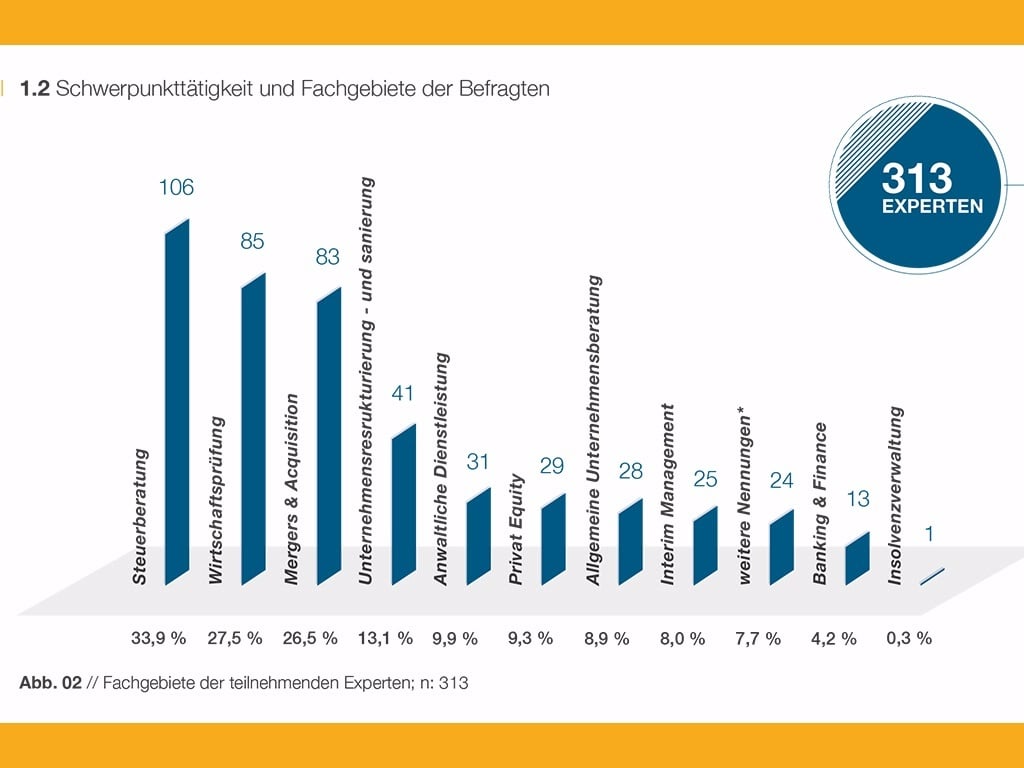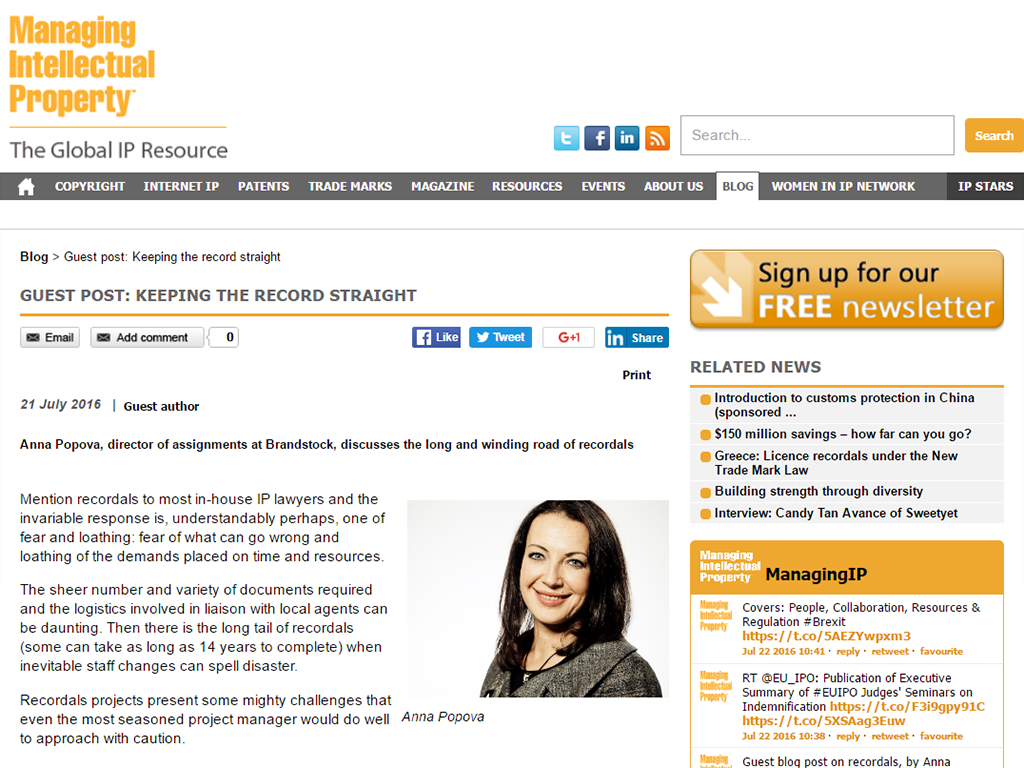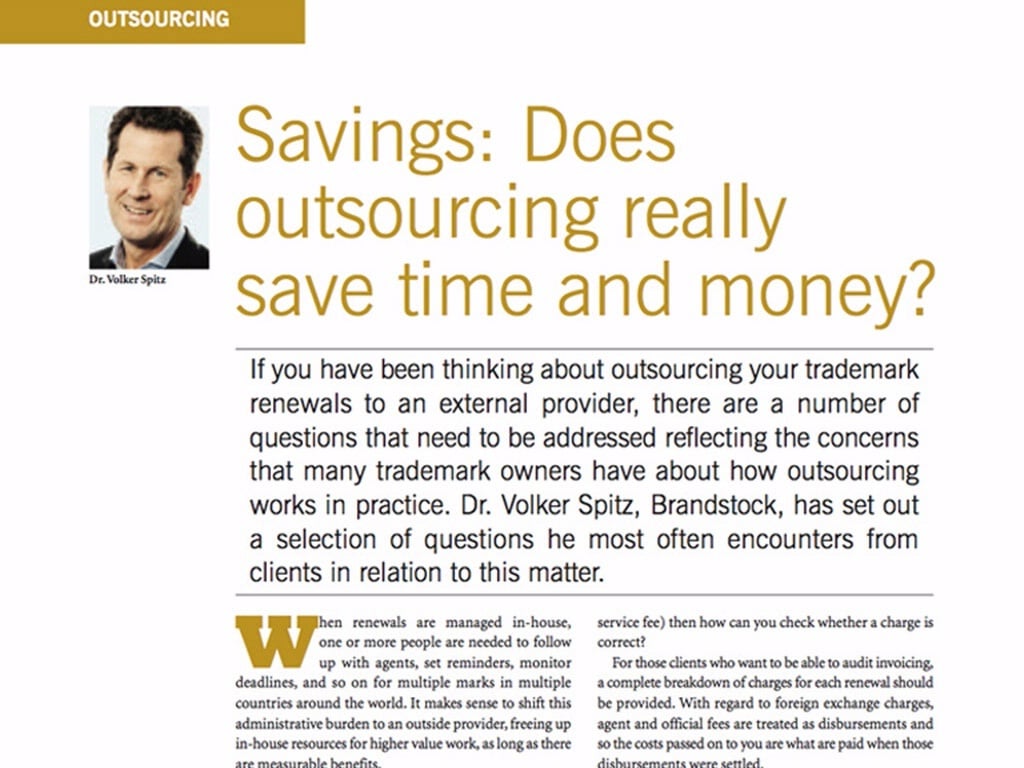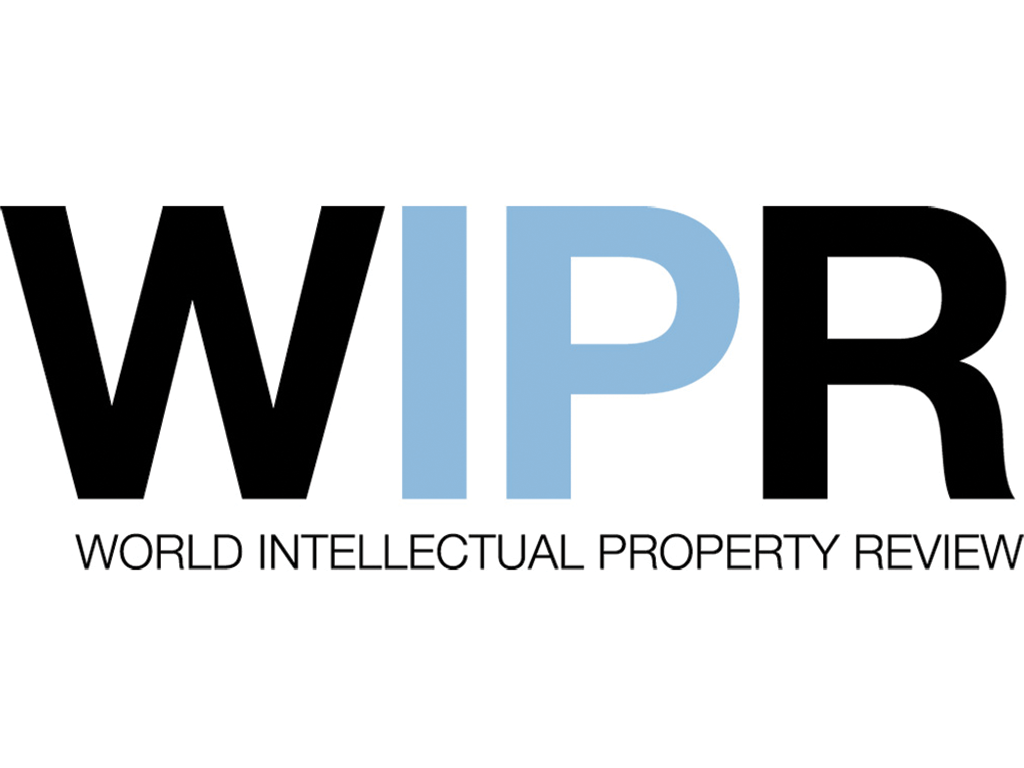150 Million US$ Savings – How Far Can You Go?
by Volker Spitz, Chief Executive Officer, Brandstock
Background
This article explains what exactly agent benchmarking is, with a particular emphasis on standard trademark and patent services. It also shows how agent benchmarking can be used to reduce costs in the area of intellectual property (IP) significantly and sustainably and at the same time improve quality. Benchmarking provides crucial benefits that may be taken for granted in today’s business world, but it’s been a rather long and somewhat murky road to reach this point when it comes to trademark and patent services. The delicate handling of transparency issues, negotiating prices, controlling costs and monitoring and improving the level of service provided did not happen overnight. Through the collection of cost-related data, its subsequent analysis, and the required human interactions involved, benchmarking’s critical place as a fundamental business practice has finally arrived in the IP world.
The year is about to end and your annual budget is over?
Agent Benchmarking is the solution: click here and get your SPECIAL OFFER!
After having completed more than a hundred agent benchmarking projects for the owners of some of the largest patent and trademark portfolios, we feel that it is time for some conclusions. Over the last ten to fifteen years, CEOs, CFOs, GCs and procurement departments began to investigate, evaluate and question the budgets – in particular the agent fees and official fees – of their companies’ IP departments. While outsourcing and offshoring of IP operations became a primary recommendation from management and consultants, this approach had one key risk: the lack of transparency into its potential cost savings and efficiency gains. Benchmarking became the means to restoring order in a suddenly chaotic IP universe.
Challenges
Lack of transparency complicated the initial benchmarking efforts – this included limited or incomplete information on agent fees, benchmark data from local agents worldwide, correct official fees, and, of course, information about fees paid by other companies and competitors in particular. In some cases companies were struggling just to identify all the local agents used by their different divisions and departments. At the same time, procurement departments found it difficult to apply methods and RFP platforms which had been well-established over many years for other areas from IT, HR, facility management, marketing and finance to patents and trademarks.
It was only when some of the large patent and trademark owners decided simultaneously but independently to initiate benchmarking projects that it became possible to gather attorney fees and official fees charged by their individual agent networks, and to compare these fees with fees charged by agents working for other companies or charged by their own agents to other companies, (sometimes to their competitors) – while of course taking care to anonymize the data. There was however one more hurdle: the definition of a standardized set of cost parameters and services that could be compared globally. After obtaining correct official fees from the almost two hundred Patent Offices around the world, companies could finally compare the official fees charged by their agent network to the correct official fee applied by local Patent Offices.
Facts and conclusions
Several facts emerged as soon as the initial set of data had been collected.
Most companies realized that they had been using a vast network of anywhere from 80 to 950 agents, selected by numerous heads of IP departments over decades and inherited in the course of multiple mergers and acquisitions. Upon completion of more than a hundred benchmarking projects, we discovered that that the industry uses approximately 2,000 different law firms covering most of the regions worldwide. Only in a few regions such as North America and Western Europe has the number of “new” agents been increasing from project to project. In other regions such as the Middle East, Africa, Asia and Eastern Europe, it became obvious that relatively few agents are accepted by major players in IP to provide services.
Nearly all companies, even from the same industry and with a similarly sized patent and/or trademark portfolio, were paying different attorney fees to local agents – sometimes to the same agent. In some cases each division had been charged differently and even local agents located in different cities were charging different fees. Differences between the hourly rates charged by agents were enormous, varying widely from region to region and even within specific countries with a North to South increase. Only from a selected group of countries had all agents been applying the correct official fees. In certain regions, many agents applied hefty mark-ups of 30 to 50% and more. Again a strong North to South and West to East increase was identified. In addition, some providers of global services such as patent annuities made up for their ever decreasing handling fees with decades of applying incorrect exchange rates, thereby overcharging owners of large patent portfolios by anything from 13 to 35% and resulting in millions of US$ in damages.
Goals identified
These facts permitted corporate procurement, IP departments and senior management to formulate the objectives to be achieved by agent benchmarking projects – although it soon became clear that it would be difficult to meet the demands of two sides: procurement and management, which were looking primarily at expenses and possible savings, and IP departments, which were more concerned about service quality and worried about their personal relationships with agents. This gap in priorities was bridged by instituting a number of shared objectives.
Timeframe
With a solid project plan, defined processes and a dedicated in-house team in place, most companies were able to complete their benchmarking projects within six months. In some cases agent selection delayed individual projects, and completion took up to twelve months.
Transparency of fees and a vast amount of data collected from the largest IP owners worldwide made it fairly easy to achieve most of the above goals in a relatively short period of time.
There were also a few concrete outcomes:
- Nearly all agents lowered their fees substantially when confronted with the average of fees charged, including the market price and lowest price for particular services in a specific country, as well as the “target fees” and the lower fees certain agents were already granting companies of a similar size and industry.
- In some cases, two or even three rounds of negotiation were necessary to achieve the requested result.
- Most agents who had been charging incorrect official fees in the past accepted this fact and agreed – in writing – to apply only correct official fees, including correct exchange rates, in the future.
- Most agents, depending on the region, willingly accepted flat fees for certain services which were not significantly higher than the current fees for individual tasks, and allowed clients to opt for either a flat fee or fees charged per hour at the outset of a new project.
- Most agents, in particular in regions with lower costs of living, accepted “reasonable” hourly rates, which prompted a worldwide reduction of agents’ hourly rates.
Agent selection and network consolidation
For all companies concerned, the reduction of the number of agents instructed, consolidation of agents in some regions and selection of agents with the highest level of service quality and the best rates available were key. Most companies applied certain company specific service quality matrixes and/or score card systems and were able to achieve this goal. However, many faced the challenge of not concentrating their efforts on the local law firm in question, but rather on the individual attorneys and paralegals assigned to their portfolios.
Service Level Agreements
Generally the benchmarking projects were considered completed when all agents concerned signed service level agreements and agreed to specific terms and conditions and, of course, to the negotiated fees and correct official fees. Again, it helped that the industry tried to develop a best practice by looking at what their peers were doing and what should have developed into an industry standard long ago.
Besides specifications related to work performance and billing guidelines issues such as sufficient insurance coverage, the ability to be able to work on clients’ patent and trademark management systems online without extra charges became increasingly important. While completion of an entire benchmarking project might have taken six months, it took some companies two years for all their agents to agree to and sign the new service level agreements.
Post-benchmarking activities
With agent fees now transparent and negotiated to an acceptable level and the correct official fees applied, as well as a reliable, consolidated agent networks selected and solid service level agreements in place, there are still a few additional challenges.
Experience has shown that a few agents have been trying to make up for lost revenues by billing more hours or by charging for tasks that were not part of the benchmarking projects. While random checks and some serious conversations do help, the only long-term solution is a semi or fully automated electronic billing system, combined with an electronic invoice checking process.
Companies are currently working on different solutions ranging from the implementation of an IP cost calculation tool paired with manual checks, to the implementation of a database solution, i.e. a combination of features already included in their electronic billing systems with an IP cost calculation tool. Whether an industry billing standard à la Ledes can be developed for IP has yet to be seen.
Some companies are also working on establishing an Agent Management role, in some cases together with a balanced scorecard system, as a single point of contact for all issues between agents and in-house staff. In general, this role is staffed by an existing team member, but companies are increasingly looking to external service providers to cover this, together with the checking of invoices, in addition to their existing activities.
Outlook
Benchmarking clearly did not stop at just protecting IP departments from outsourcing and offshoring intentions. Procurement and management got a very first taste of what is possible, and will continue to pursue the optimization of fees charged by IP attorneys. At the same time, IP departments, agents and service providers have to start accepting the fact that a large part of IP is being commoditized and that it will no longer be possible to charge exorbitant fees for purely administrative work. On the other hand, stakeholders responsible for cost reductions have to understand that service quality does come with a price.
